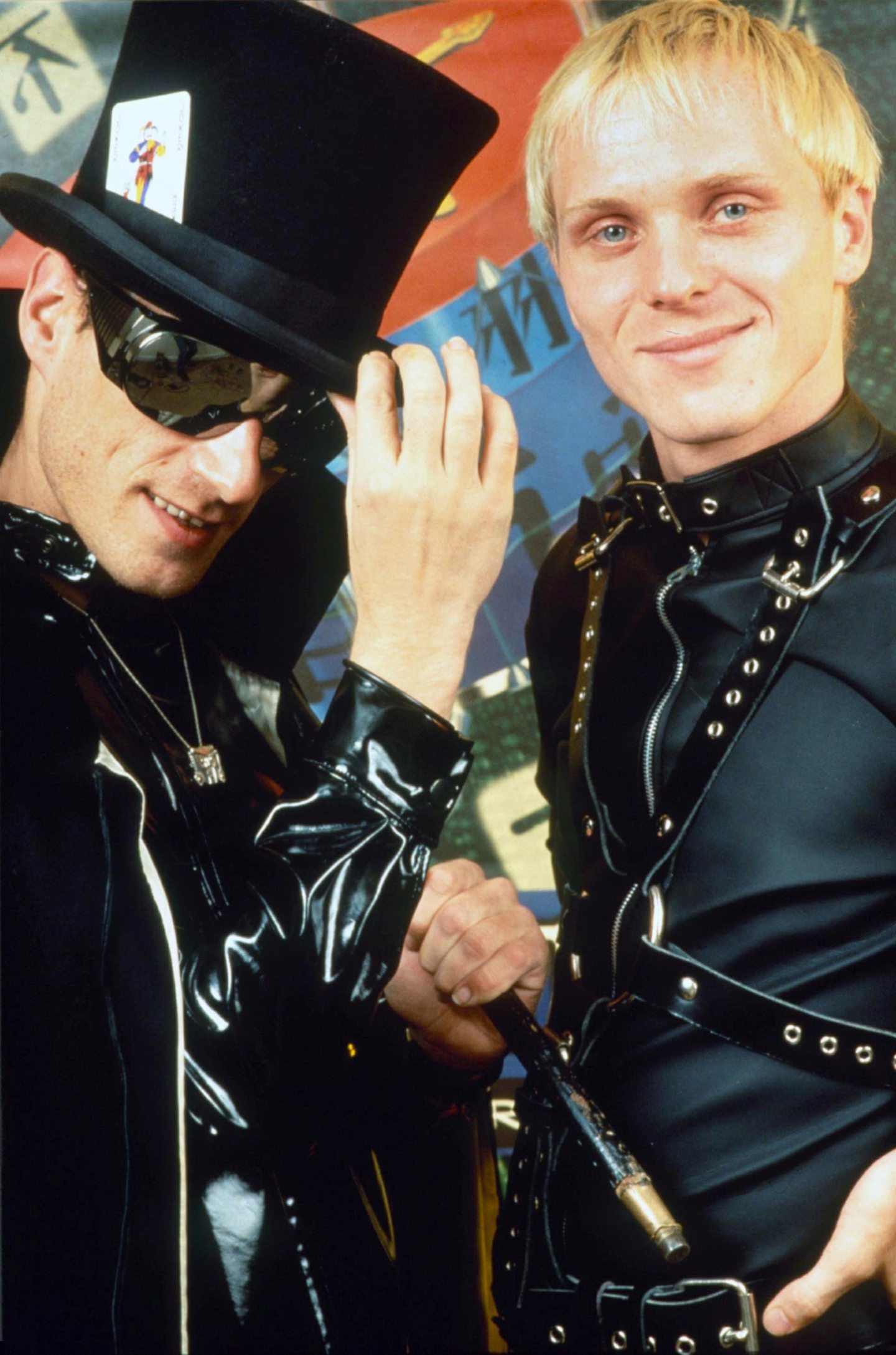The Shamen almost broke up before releasing Ebeneezer Goode 30 years ago which would become the Aberdeen band’s biggest hit.
The Shamen were formed by Colin Angus from Cults in 1985 and started out as a guitar band before starting to use synthesizers and computerised rhythms.
Released in June 1987, The Shamen’s first album Drop was released to critical acclaim, after which, a change of line-up saw Colin move from playing bass to taking up the dual roles of lead vocals and guitar, with William Sinnott picking up the bass.
Colin and Will became close friends while working as psychiatric nurses in Aberdeen and shot to national prominence for reasons not directly related to their music.
Tory MP Geoffrey Dickens was not a fan
The group were dropped by McEwan’s, who had planned to use one of their songs, Happy Days, in a lager advert, before stories broke of Colin’s alleged drug use.
“McEwan’s are just being spiteful and acting as censors,” said Colin.
“They had no right to do that.”
The Shamen told them they couldn’t get their £100,00 back and used it to buy equipment before attracting further adverse publicity in 1988.
Tory MP Geoffrey Dickens called for the band to be prosecuted for promoting their British tour by franking mail with the slogan, Jesus is a Lie, and using an inverted cross.
The MP claimed their action legitimised satanic symbols and could damage young minds but Colin insisted it was a protest against the state-run Post Office.
The Post Office began delivering mail bearing the postmark, Jesus is Alive, which was privately financed by Christian evangelist Paul Slennet to mark Easter.
Colin said: “We franked our mail in retaliation to the Post Office, because we found the Jesus is Alive, slogan as offensive as Geoffrey Dickens finds us.
“We were annoyed when our fan mail started arriving with that slogan.”
The Shamen moved to London in 1988 to embrace the emerging rave scene and the techno influence began to show on June’s Jesus Loves Amerika single.
The Shamen’s pre-rave innovative use of film clips, smoke, lights and sampled backing tapes at their live performances created more than just a music show for their audience and also gave them the idea for their own club.
They successfully took over a weekly residency at London’s Town and Country Club, where they created Synergy, offering complete entertainment with DJs, rappers, lights and smoke as well as The Shamen’s live show.
The Shamen’s second album, 1989’s In Gorbachev We Trust, saw the group further enhancing their sound with riffing guitars, samples and funky programmed beats.
Their third album, En-Tact, was released in November 1990, which spawned the hit singles Move Any Mountain, Hyperreal and Make It Mine.
Triumph and tragedy for the band in 1991
Tragedy then struck in May 1991 when Will died in Spain at the age of 30.
Will was knocked unconscious and drowned when caught in an undercurrent off the coast of La Gomera shortly after filming the video for Move Any Mountain.
The band’s future was now uncertain.
Speaking to the Evening Express in August 1991, Colin said: “It was very, very tough.
“Obviously after all that time, we were really close.
“He was my best friend. I couldn’t cope for a while after I found out about the accident.
“I didn’t want to go on. I wanted to shut down The Shamen because it just wasn’t the same without Will.
“I’ve managed to come to terms with it as much as possible now, but I still can’t really talk about Will.
“He was a good man.”
Colin was ready to give up The Shamen.
Then Will’s parents called to say they wanted him to carry on.
“They really wanted Will’s music to be heard,” he said.
“They said I should go ahead and put out the single and video.”
Colin signed up a new rapper, DJ and producer Richard West whose handle was Mr C, and Cheryl, a female singer, and they went off to write new material.
“It will be different this time round,” said Colin.
“It couldn’t be the same without Will.”
Jerry Sadowitz played Ebeneezer Goode
Colin wrote Ebeneezer Goode and asked Mr C to take up the lead vocals because the character being portrayed in the song “was a cheeky Cockney chappie”.
The result was a chart-topping banger released on August 24 1992 with lyrics filled with not-so-subtle drug references which were “naughty, naughty, very naughty”.
The music video featured Scottish comedian Jerry Sadowitz as Ebeneezer Goode.
The track became labelled as an “anthem for the pill heads” and stayed at the top of the charts for four weeks in September 1992 before being withdrawn by the band.
Ebeneezer Goode was a single from the band’s album Boss Drum which went double platinum and won the Ivor Novello award for Best UK Songwriters.
But the awards committee failed to put the group forward in any category at the 1993 Brit Awards, despite The Shamen having had four Top 10 hits in 1992.
Organisers attempted to smooth the waters and asked them to instead perform at the ceremony but then said they couldn’t sing their biggest hit Ebeneezer Goode.
The group were furious and unsurprisingly responded with two words!
Axis Mutatis was released in 1995 featuring new vocalist Victoria Wilson-James before the band spent the summer of 1996 performing on festival stages across Europe.
Hempton Manor was The Shamen’s sixth studio album in 1996 and marked a return to their underground roots before Colin and Mr C decided to take a break in 1997.
Colin and Mr C returned to the studio in 1998 to write and record final album UV on the Moksha Recordings label before breaking up afterwards.
Then Colin worked on a project with Matt Catt called Pablo Sandoz from 2004 to 2009 but is now “actively avoiding work, yet still involved in philosophical pursuits”.
Mr C became a club owner in London for 13 years and now resides in Los Angeles and continues to travel the world performing at the age of 57.
But what about the guy with the bittersweet face?
Ebeneezer remains the main geezer and a real crowd pleaser some 30 years on.
More like this:
When Oasis brought the Be Here Now tour to Aberdeen in 1997
Unseen images of the Rolling Stones in Aberdeen in 1982 – in colour












Conversation